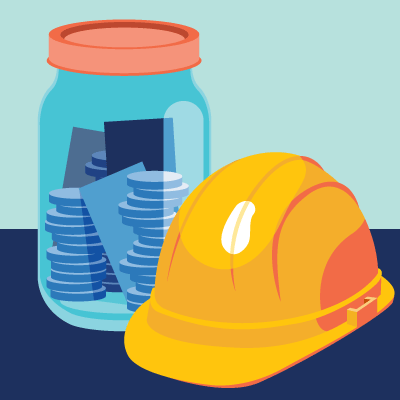Editor’s Note: This article originally appeared on the Supply Chain @ MIT blog. It was written by Rob Savitsky, Product Marketing Manager, AIR Worldwide. Aaron Michel also contributed.
As we head into 2018, what potential disruptions do supply chains face and how can companies manage these risks over the coming year?
It’s impossible to know for sure how supply chains will be disrupted in 2018, but we can prepare for the worst by learning from the past. Disruptive events that occurred over the last several years fall into three broad categories of supply chain risk: natural catastrophes, man-made, and economic. Let’s look at each type of risk and its impacts on supply chains.
1. Natural Catastrophes
Supply chains are vulnerable to natural disasters such as storms, floods, and wildfires. Although catastrophes like hurricanes and earthquakes are infrequent, they have the potential to cause extensive damage. For example, in 2016, we saw significant disruptions following the Kumamoto earthquake in Japan that forced the automotive industry to suspend production, floods in Louisiana that shut down the fourth-largest U.S. oil refinery, Hurricane Matthew that disabled ports up and down the U.S. East Coast, and wildfires in California that cut off key rail and trucking routes.
There was no letup in 2017, and the losses incurred from catastrophes such as hurricanes, wildfires, and earthquakes could make it one of the costliest years in history for the property insurance industry. These events also caused supply chain disruptions—although not all the effects may have been fully realized yet. For example, an analysis carried out by AIR on the potential impact of Hurricane Harvey on regional manufacturing found that, based on percentage of the total potential revenue loss, the top three subsectors are petroleum and coal products manufacturing (37%), chemical manufacturing (13%), and oil and gas extraction (12%). Time will tell how disruptions at these raw materials subsectors will ripple through global supply chains to disrupt other industries.
Hurricane Maria, which slammed into Puerto Rico on September 20, 2017, is a prime example of a catastrophe that reverberates through supply chains. It’s been reported, for example, that the destruction of medical device manufacturing capacity in Puerto Rico wrought by the hurricane has led to a national shortage of medical IVs, which has forced some hospitals to use alternative products and find new suppliers.
Listen to the podcast of our team discussing how supply chain risks are impacting organizations.
2. Man-Made
Man-made events such as fire, product defects, cyber attacks, labor and civil unrest, terrorism, utility failure, and piracy, are more frequent disruptors of supply chains but typically have a lower severity than natural catastrophes.
The year 2016 saw several man-made disruptions, including the late summer Gap warehouse fire in Fishkill, New York, which destroyed 30% of Gap’s total warehouse space and disrupted more than 10% of Gap’s orders. Another example is the Samsung Note cellphone battery recall, which was linked to problems in a battery supplier’s supply chain and had far-reaching consequences for the Samsung brand and its customers.
The past few years have seen an increasing prevalence of cyber attacks. Most of these incidents, such as the high-profile Equifax data breach that involved the personal information of some 143 million Americans, and the Dyn cyber attack, which took down some of the world’s most popular websites such as Twitter, Airbnb, and Netflix, do not directly affect supply chains. However, they raise major red flags for supply chain practitioners. It seems that cyber criminals have a growing number of avenues of attack at their disposal, especially given the exponential growth in the number of internet-enabled devices and cloud-based communications networks.
Moreover, cyber attacks tend to be “silent”—at AIR, we have a database of approximately 23,000 historical breaches, but only a mere 10 to 20 are reported each year.
3. Economic
Economic forces are not physical disruptions by nature, but cause product or labor shortages. Examples include financial insolvency, trade or tariff disagreements, loss of patent rights, and sub-suppliers that perform poorly. The 2016 Hanjin maritime carrier bankruptcy is a recent example. This major disruption left workers, ships, containers, and product stranded at sea and in ports around the world.
A notable potential disruption of this type that was averted involves the 105-year-old, Massachusetts-based supplier Cutler-McDermott Co., that produced auto parts for GM and filed for Chapter 11 bankruptcy in 2016. The company’s insolvency threatened 19 of GM’s North American production facilities, and if not for a settlement of USD 2.9 million, could have cost GM “tens of millions of dollars” in losses.
While this type of risk is unpredictable—the ongoing Brexit saga in Europe and the forthcoming U.S. mid-term congressional elections, for instance—large economic crises will certainly provide some drama in 2018. Unfortunately, it’s too early to predict the outcomes with any degree of certainty.
Preparing Supply Chains for 2018
The increasing global interconnectivity of supply chains, disruptions from natural catastrophes, man-made events, and economic risks have resulted in increasing vulnerability for organizations. From a business continuity and risk management standpoint, it’s critical to examine your supply chain from end to end, and be aware of the potential threats when developing risk management strategies and crisis response plans.
Historically, companies have tended to manage disruptions as quickly as possible—regardless of the causes—as they occur, rather than constructing supply chains that mitigate the likelihood of such events. However, this practice is changing with a renewed focus on resilience. For example, after being forced to halt vehicle production due to the 2011 Tohoku earthquake, Toyota learned from the event and responded by building information networks covering about 4,000 auto parts. When the 2016 Kumamoto earthquake occurred, Toyota was better prepared and able to identify which suppliers had been affected in a matter of hours, and then quickly shift parts production to alternative suppliers. More companies are recognizing that to respond rapidly to disruptions, they must proactively prepare for service interruptions and gain an understanding of their underlying vulnerabilities.
Let’s hope that the increasing emphasis on resilience will steel supply chains against adversity in 2018.



